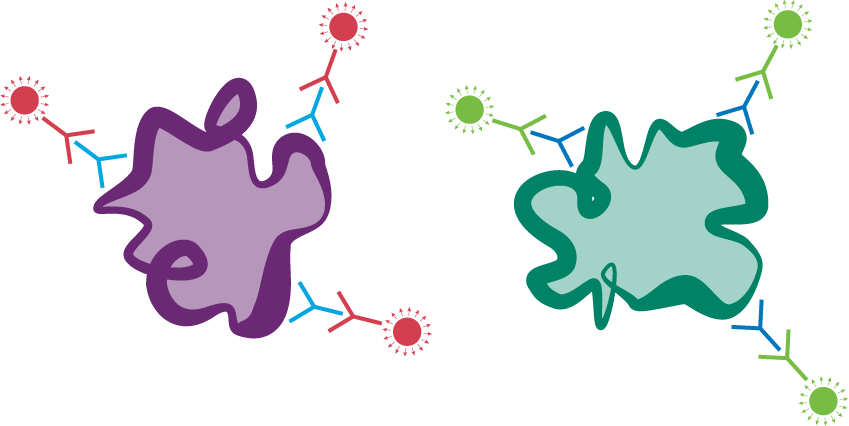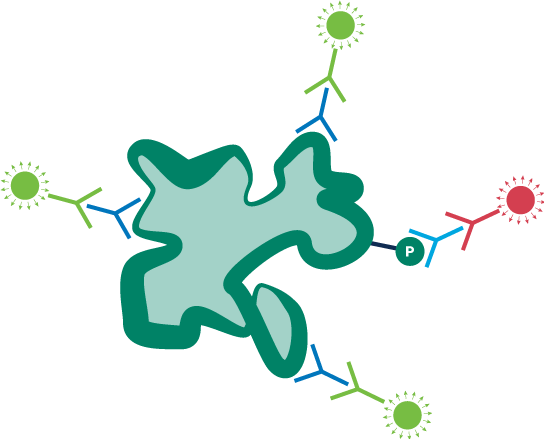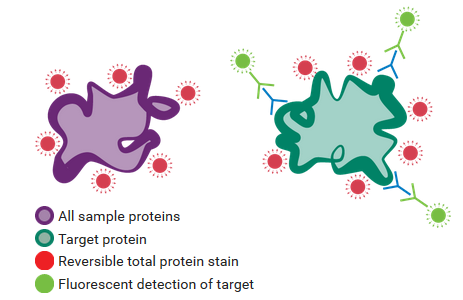“Housekeeping proteins should not be used for normalization without evidence that experimental manipulations do not affect their expression”[1]
Internal Loading Controls and Western Blot Normalization
Normalization for Western blots can be challenging because each system you study is very unique. Your choice of normalization method depends on the targets you are detecting as well as their experimental or biological context. There are a variety of normalization strategies, and each one utilizes a different type of internal loading control. Internal loading controls are endogenous proteins used to confirm that the samples have been equally loaded across all wells. Three common internal loading controls are housekeeping proteins (HKP), signaling proteins, and total protein stains.
1. Housekeeping Proteins
A housekeeping protein is an endogenous protein present in all samples to which the target is normalized. When using an HKP, be sure to validate that it is not affected by experimental conditions or treatments in all your samples and that it is detected within the linear range. Use Odyssey® Loading Indicators to determine if signal variation for an HKP is due to inconsistent sample loading. Additionally, you can use a total protein stain to validate your HKP and confirm stable expression.
2. Signaling Proteins
A signaling protein is a protein that is used as its own internal loading control and is helpful in analyzing post-translational modifications (PTMs). PTMs are alterations that proteins undergo after translation, such as phosphorylation, glycosylation, and ubiquitination.Pan antibodies recognize an unmodified protein region, or epitope, on the target protein, accounting for the total amount of target protein present. A modification-specific antibody is specific to an epitope that contains the post-translational modification. Therefore, it only detects the modified form of the target protein. The signal is then normalized to the total level of target protein.

3. Total Protein Stains
A total protein stain occurs when the target is normalized to the total amount of protein sample present in each lane. In this case, a stain is used to visualize all proteins present in the membrane. Additionally, you can monitor protein transfer across the entire blot at all molecular weights. This determines if there are any irregularities that indicate the blot should be run again to produce more robust results.Revert™ 700 Total Protein Stain is a membrane stain that fluoresces at 700 nm and can be detected with a near-infrared fluorescence imaging system. With Revert 700 Total Protein Stain, you can still detect targets in the 700 and 800 nm channels in the same lane and at the same time after de-staining.
Western Blot Normalization
Proper normalization is essential for accurate, reproducible Western blot results. However, there is a lot more to normalization strategies than we cover here. Our Western Blot Normalization Handbook can help you to thoroughly weigh the pros and cons of each internal loading control. If you have questions about normalization strategies, internal loading controls, or Western blotting in general, then please don't hesitate to contact us today. We're always eager to assist you and your team with optimizing your protocols.References:
- [1] Instructions for Authors. The Journal of Biological Chemistry. American Society for Biochemistry and Molecular Biology. Web. 31 July 2017.
- Collecting and Presenting Data. The Journal of Biological Chemistry. American Society for Biochemistry and Molecular Biology. Web. 9 May 2018.
Powered by Froala Editor